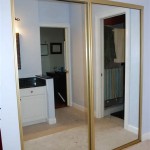Screen Mirroring From MacBook to Samsung TV: A Comprehensive Guide to Free Options
Screen mirroring, also known as screen casting, is the technology that allows display of the content from a MacBook onto a Samsung TV. This functionality is helpful for presentations, watching movies, viewing photos, playing games, or simply sharing the MacBook screen with a larger audience. Thankfully, there are multiple ways to accomplish this mirroring process, many of which are entirely free. This article will explore several methods for screen mirroring from a MacBook to a Samsung TV without incurring any costs.
Before delving into the specific methods, it is important to establish a few preliminary requirements. Both the MacBook and the Samsung TV need to be connected to the same Wi-Fi network. This shared network allows the devices to discover and communicate with each other. The Samsung TV should also be running the latest firmware version to ensure compatibility and optimal performance. Firmware updates typically include bug fixes and enhancements that may affect screen mirroring capabilities.
Furthermore, it's beneficial to understand the underlying technologies that enable screen mirroring. Primarily, AirPlay and third-party apps provide the necessary connections. AirPlay, developed by Apple, is a proprietary protocol designed for seamless streaming of audio and video content between Apple devices. Samsung TVs have integrated AirPlay 2 support, enabling direct mirroring from a MacBook. Third-party applications offer alternative solutions when AirPlay is not preferred or encounters issues. These apps often utilize standard network protocols to transmit the screen data.
Utilizing AirPlay for Wireless Screen Mirroring
AirPlay is the most direct and often the easiest method for screen mirroring from a MacBook to a Samsung TV, provided both devices support it. Most modern Samsung TVs come equipped with AirPlay 2, making the process straightforward. To initiate screen mirroring via AirPlay, begin by confirming that AirPlay is enabled on the Samsung TV. This can usually be found within the TV's settings menu, typically under "General" or "Apple AirPlay Settings."
Once AirPlay is enabled on the TV, proceed to the MacBook. Navigate to the system settings, found by clicking the Apple menu in the top-left corner of the screen and selecting "System Preferences" (or "System Settings" in newer macOS versions). Within System Preferences, look for the "Displays" option. Clicking on "Displays" will open a window with various display-related settings.
In the "Displays" settings, locate the "AirPlay Display" dropdown menu. This menu will list available AirPlay devices on the network. Select the Samsung TV from the list. The MacBook screen will then attempt to connect to the TV. A passcode may appear on the TV screen, which must be entered on the MacBook to authenticate the connection and begin screen mirroring.
After successfully connecting, the MacBook screen should be mirrored onto the Samsung TV. The resolution and aspect ratio may need adjustment to optimize the viewing experience. These settings can be configured within the same "Displays" settings on the MacBook. Options include mirroring the display (duplicating the MacBook screen), extending the display (treating the TV as a second monitor), and adjusting the resolution and refresh rate.
AirPlay offers several advantages, including ease of use and relatively low latency, making it suitable for tasks like watching videos or presenting slideshows. However, performance can be affected by network congestion or interference. If encountering issues such as lag or stuttering, try moving the MacBook closer to the Wi-Fi router or reducing the resolution of the mirrored display.
Exploring Third-Party Screen Mirroring Applications
If AirPlay is not an option or if alternative features are desired, several third-party screen mirroring applications are available for macOS that offer free screen mirroring capabilities. Some of these applications are completely free, while others offer a free trial period or a limited free version with paid upgrades for additional features. These applications are particularly useful when dealing with older Samsung TVs that lack native AirPlay support or when troubleshooting AirPlay connection problems.
A popular free option is "LetsView." LetsView is a free screen mirroring application that supports both macOS and Samsung TVs. To use LetsView, download and install the application on both the MacBook and the Samsung TV. The TV version may need to be installed via the Samsung App Store. After installation, launch the application on both devices.
LetsView typically uses a PIN code or QR code system to establish the connection. The MacBook application will scan the network for available devices and list the Samsung TV. Select the TV, and a PIN code will appear on the TV screen. Enter this PIN code into the LetsView application on the MacBook. Alternatively, use the MacBook’s camera to scan the displayed QR code on the TV to initiate the connection.
Once connected, the MacBook screen will be mirrored onto the Samsung TV. LetsView often provides additional features such as screen annotation tools and the ability to capture screenshots or record the mirrored screen. The performance of LetsView can vary depending on network conditions and the processing power of the devices involved.
Another application worth considering is "VLC media player." While primarily known as a media player, VLC also offers screen mirroring capabilities via streaming. This method involves configuring VLC on the MacBook to stream the desktop to the Samsung TV. On the MacBook, navigate to VLC's "Stream" option. Select "Desktop" as the source and configure the streaming settings, including the resolution and frame rate. The TV will need to be set up to receive the stream, which may require using a media server application or manually entering the stream URL into VLC on the TV (if VLC is installed on the TV).
Using third-party applications provides flexibility and can address compatibility issues, but it's vital to choose reputable applications from trusted sources to minimize the risk of malware or privacy concerns. Always read reviews and check the application's permissions before installing it.
Addressing Common Screen Mirroring Issues
Even when using AirPlay or third-party applications, users may encounter issues during the screen mirroring process. These issues can range from connection problems to performance issues, such as lag or distorted images. Troubleshooting these issues often involves systematically checking various factors.
First, ensure that both the MacBook and the Samsung TV are connected to the same Wi-Fi network. A common mistake is connecting the devices to different networks, which prevents them from discovering each other. Double-check the Wi-Fi settings on both devices to confirm they are connected to the same SSID.
Second, verify that AirPlay is enabled on both the MacBook and the Samsung TV. On the MacBook, check the "Displays" settings in System Preferences. On the Samsung TV, navigate to the settings menu and look for the AirPlay options (usually under "General" or "Apple AirPlay Settings"). Sometimes, toggling AirPlay off and then back on can resolve connection problems.
Third, consider network interference. Other devices using the same Wi-Fi network can consume bandwidth and cause lag or stuttering during screen mirroring. Try disconnecting unnecessary devices from the network or moving the MacBook closer to the Wi-Fi router to improve signal strength. Using a 5 GHz Wi-Fi network instead of a 2.4 GHz network can also reduce interference from other electronic devices.
Fourth, update the firmware on both the MacBook and the Samsung TV. Outdated firmware can contain bugs that affect screen mirroring functionality. Check for updates in the System Preferences on the MacBook and in the settings menu on the Samsung TV. Firmware updates often include performance improvements and bug fixes that can resolve compatibility issues.
Fifth, if using a third-party application, ensure that both the MacBook and TV applications are running the latest versions. Updates often include bug fixes and performance enhancements. Also, try restarting both the MacBook and the Samsung TV. A simple restart can sometimes resolve temporary software glitches that interfere with screen mirroring.
Finally, check the MacBook's firewall settings. The firewall may be blocking the screen mirroring application from accessing the network. Adjust the firewall settings to allow the application to communicate with the Samsung TV. This may involve creating an exception for the application in the firewall configuration.
By systematically addressing these potential issues, most screen mirroring problems can be resolved, allowing for a seamless and enjoyable viewing experience from a MacBook to a Samsung TV with free options.

How To Screen Mirror Mac Samsung Tv Step By Guide

How To Mirror A Mac Tv Full Guide For 2024

How To Connect A Macbook Samsung Tv Wirelessly

Screen Mirror To Samsung Tv Android Mac Ios Free App

3 Instant Ways To Screen Mirror Mac Samsung Tv With Troubleshooting Pointerer Com

How To Screen Mirror Macbook Samsung Tv

6 Ways How To Mirror Your Macbook Samsung Tv

How To Screen Mirror Mac Samsung Tv Step By Guide

Mirror Mac To Tv Without Apple Save Money Get Free App

Screen Mirroring Mac Macbook To Samsung Tv Airbeamtv








